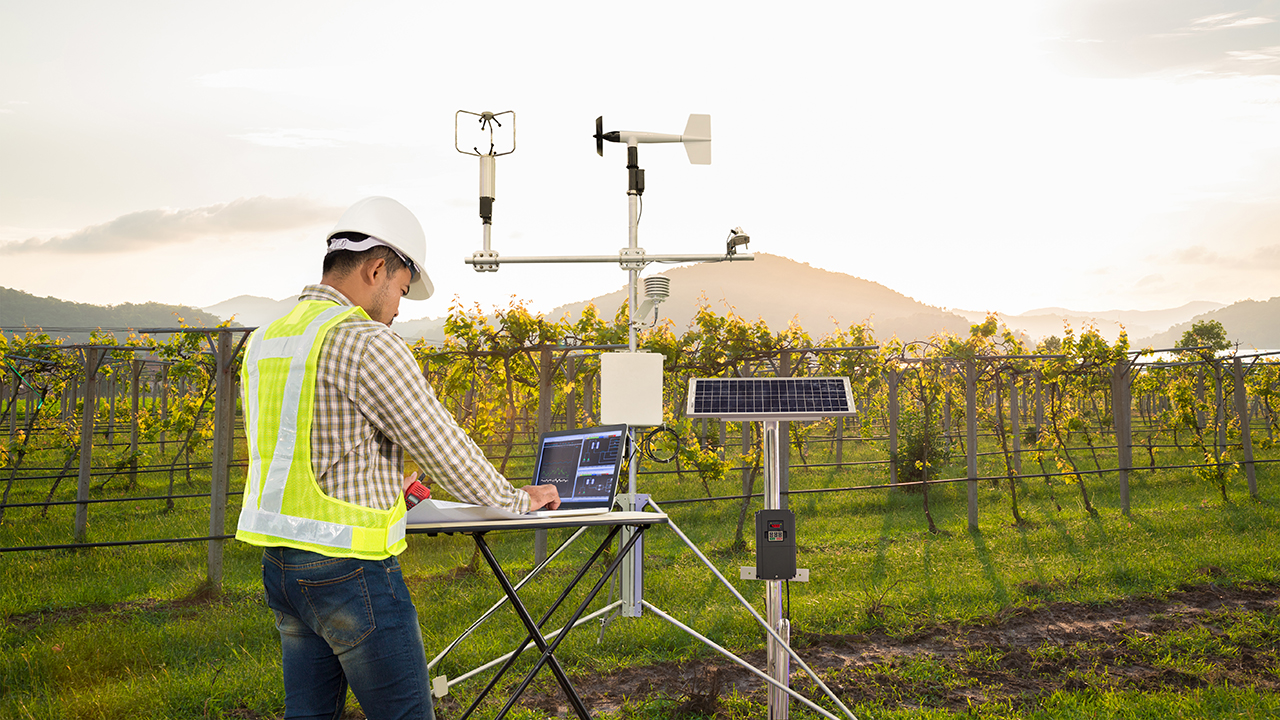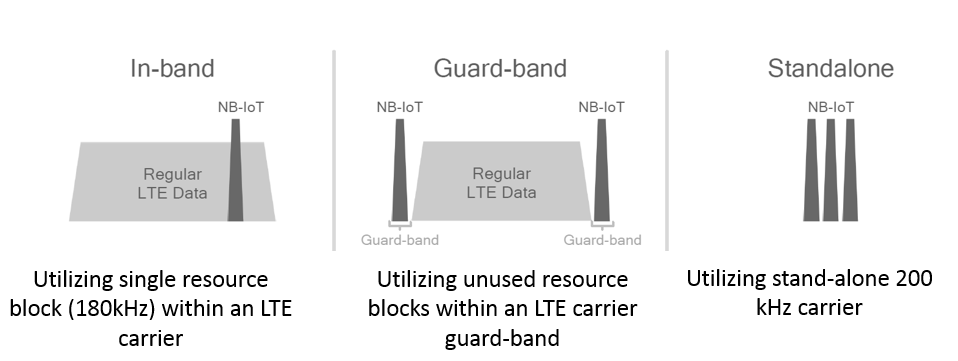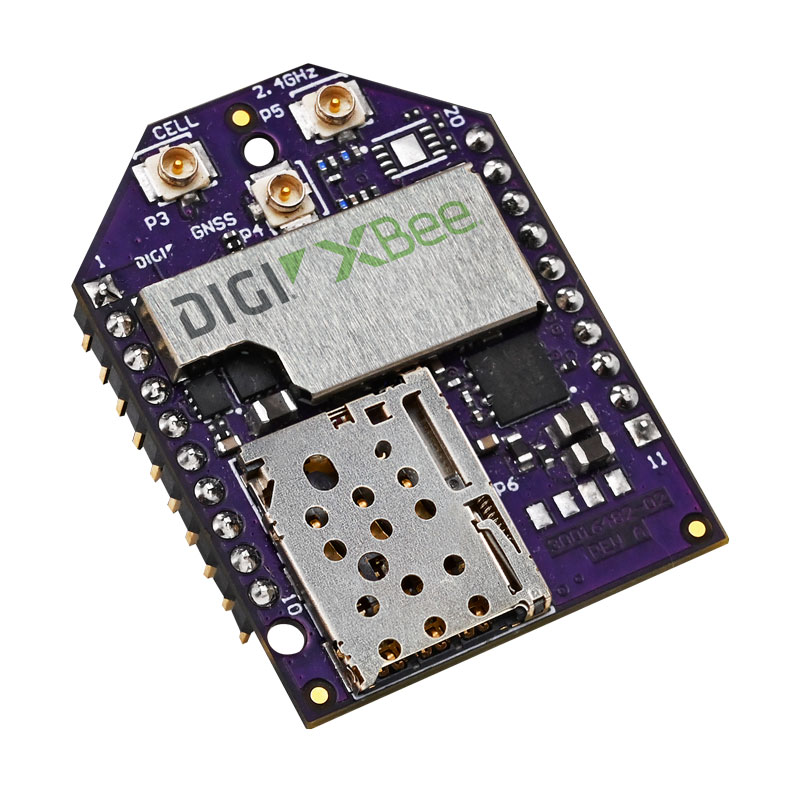物联网使各种应用能够与大量无线通信设备进行连接和通信。它有望为智能城市、公用事业、制造设施、农业应用、远程工业机械等提供动力。这些应用均可使用窄带物联网(NB-IoT )网络协议。
例如,智能城市可使用 NB-IoT 监控整个城市的街道照明、公用事业电表和废物管理系统。太阳能或风能发电场可使用窄带IoT (NB-IoT) 监控整个部署中的每台设备。工业运营可依靠 NB-IoT 远程监控分布在各个地点的所有机器。在本博文中,我们将回答 "什么是 NB-IoT ?"这一问题,并探讨其工作原理和重要原因。请继续阅读,了解 NB-IoT 为何适合您的应用。
什么是 NB-IoT ?

NB-IoT 是窄带IoT 的缩写。它是一种低功耗广域网 (LPWAN) 技术,部署在频率范围有限的蜂窝网络上。对于不需要大量数据通信或高速传输且需要远距离传输的IoT 应用,NB-IoT 可能会满足您的需求。
它甚至可以在室内和地下发送数据,同时只消耗很少的电池电量。这意味着,即使设备没有连接到互联网,它也是一种可扩展、高成本效益和高能效的网络选择。
能效是 NB-IoT 的一个重要方面。NB-IoT 协议的设计初衷是为超低功耗设备提供超长时间的供电。这意味着大量设备所需的昂贵电池无需经常充电或更换。
结构简单的 NB-IoT 芯片组也意味着更低的组件成本。如果再加上因数据成本低和电池更换间隔时间长而节省的费用,NB-IoT 在可靠性和降低维护成本方面将带来巨大价值。
为什么选择 NB-IoT ?
NB-IoT 有一系列好处:
- 节能--内置省电模式会关闭 NB-IoT 模块,直到事件触发器将其激活,从而节省宝贵的电池电量
- 经济高效- 低廉的联网和数据费用使 NB-IoT 网络成为特定应用的经济实惠之选
- 长距离可靠连接--窄带IoT 架构专为在长距离上发送小数据包而设计
从智能城市照明到智能计量等一系列智能城市用例,以及工业、生态和农业监控,NB-IoT 支持各种用例。
窄带IoT 如何工作?

长期演进(或称 LTE)是始于 4G 的下一代技术,其设计不会随着下一代技术的推出而 "过期"。LTE 和 NB-IoT 搭配使用效果极佳。
什么是 LTE 中的 NB-IoT ?NB-IoT 技术最初是在第三代合作伙伴计划(3GPP)第 13 版中规定的,它以非常窄的频率运行,使用现有的 GSM 和 LTE 技术进行通信。NB-IoT 采用与 LTE 相同的帧结构。NB-IoT 在北美的频段包括 B4(1700 MHz)、B12(700 MHz)、B26(850 MHz)、B66(1700 MHz)和 B71(600 MHz)。3GPP为专用无线通信定义了 5G NR、NB-IoT、LTE 和 LTE-M。3GPP 窄带IoT 标准专为涉及众多联网设备的低成本、高能效室内应用而设计。
NB-IoT 支持带宽非常窄的简单设备,带宽为 180 千赫或 200 千赫。这种窄带IoT 带宽意味着最大数据传输速率约为每秒 250 千比特。但是,窄带IoT 架构并不需要快速的数据传输速率。从环境中收集信息的专门设计的传感器仅以小数据包的形式向窄带IoT 基站共享数据。
窄带IoT 是一种基于蜂窝标准的 LPWAN,可在 4G 和 5G 频段上运行。窄带IoT 频段是经过授权和特别规划的频段。NB-IoT 频段可与现有蜂窝网络基站集成,因此更有可能得到部署。换句话说,NB-IoT 得到了全球移动供应商的支持。
部署窄带IoT 技术
- 带内- 使用正常 LTE载波中的资源块
- 保护带- 使用 LTE载波内未使用的资源块
- 独立- GSM EDGE 无线接入网络系统目前使用的频谱,在没有蜂窝电话服务时代替 GSM 运营商使用

NB-IoT 可用性
美国、亚洲许多地区、中东、欧洲以及澳大利亚的运营商都支持 NB-IoT 。事实上,您可以在全球大多数国家找到 NB-IoT 网络。世界上 GSM 部署比 LTE 多的地区可能更容易支持 NB-IoT 。在美国和墨西哥,主要运营商已经在 LTE-M 上投入了大量资金,因此他们可能会继续重点发展该技术,而不是 NB-IoT 。不支持 NB-IoT 的运营商包括欧洲的 Orange 和日本的 NTT DoCoMo。
5G 与 NB-IoT

如前所述,3GPP 定义了 NB-IoT 。它还负责 5G,并将 NB-IoT 作为 5G 标准的一部分。事实上,NB-IoT 和 LTE-M 是 3GPP 计划支持的唯一低功耗广域 (LPWA) 标准。
5G 是第五代移动网络,与之前的 4G 和前几代网络相比,它使用更高的无线电频率。5G 使用的毫米波频率可以更快地传输大量数据。毫米波技术的一个主要缺点是其信号很容易受到天气、树木和建筑物的干扰。
NB-IoT 无法传输大量数据,速度也不快,但它擅长长距离传输信息,甚至可以穿过建筑物等障碍物。换句话说,5G 和 NB-IoT 将共存,因为 NB-IoT 是唯一支持蜂窝 LPWA 网络的技术之一。另一个相关选项是 LTE-M。请注意,Digi XBee Cellular 产品系列包括内置 LTE-M 和 NB-IoT 协议的模块,这使开发人员能够尝试这两种协议,并确定最适合其需求的协议。

NB-IoT 云潜力
NB-IoT 云平台通常是窄带IoT 架构的一部分,旨在处理服务并向业务应用发送数据。然而,采用边缘计算模式的智能边缘设备可以减少对云架构的需求。
目前正在进行多项试验,以探索 NB-IoT 的云潜力。例如,西班牙的 Sateliot 公司计划成为首家利用 5G 提供全球IoT 覆盖的卫星公司。该公司最近宣布计划与 AWS 合作,为其低地球轨道卫星星座构建云原生 NB-IoT 5G 服务。这些卫星可充当基站,为 NB-IoT 设备提供全球蜂窝室外覆盖。 IoT 专家预计,通过 卫星实现窄带IoT 的 5G将在全球范围内得到广泛采用,并成为 NB-IoT 增长的关键推动因素。
窄带与宽带
为IoT 解决方案选择正确的连接选项在很大程度上取决于应用。
与支持较高数据传输速率的宽带系统相比,窄带系统的数据传输速率通常较低。窄带更适合需要远距离传输少量数据的应用。
在智能城市中,窄带IoT 可完美实现设备与设备之间的通信。智能城市基础设施可能包括智能停车系统、智能电表甚至污染监测系统。
专家预计,工业IoT 设备的爆炸式普及将在未来几年内创造巨大的窄带IoT 市场增长。不断增长的 NB-IoT 生态系统意味着公用事业、能源和其他重要行业可以创建大规模的IoT 解决方案,以更好地管理运营。
重要的工业窄带示例
- 远程资产跟踪- 企业可使用 NB-IoT 远程跟踪、追踪和监控资产并接收状态更新
- 可持续农业- 从湿度和压力传感器到 pH 传感器,NB-IoT 可高效、经济地帮助农民持续监测土壤条件变化并发出警报
- 智能自动售货机- NB-IoT 装有智能自动售货机,可提醒服务提供商自动售货机的空物品情况
- 气体泄漏检测- NB-IoT 可完美地用于持续监测空气质量,并在浓度超过阈值时自动发出警报。
当我们使用宽带一词时,我们指的是使用较高频率的解决方案。但高频波长较窄,传输距离比窄带短。当应用需要语音或视频传输时,就需要宽带。在 IIoT 环境中,快速、准确的数据传输对防撞系统等至关重要,而宽带则是正确的解决方案。
最适合宽带的工业应用
- 智能零售- 宽带非常适用于免提零售,例如在无人杂货店中,顾客可以挑选商品并接收额外的产品信息或特价信息
- 定位服务- 从机场等场所的室内地图、医院的病人追踪到城市中的共享单车,宽带具有精确的测距能力
- 安全的楼宇门禁- 通过宽带供电的智能传感器,只需一部智能手机或手表就能自动打开安全楼宇的大门
NB-IoT 安全

随着IoT 设备的加速增长,数字安全问题日益突出。当能源和公用事业运营等关键基础设施采用 NB-IoT 进行智能传感器通信时,情况尤其如此。NB-IoT 的开发目的是以最低的能耗实现可靠的建筑物长距离穿透。但安全性如何呢?
由于它基于 3GPP 标准化的 LTE 技术框架,NB-IoT 使用与 LTE 相同的安全功能。因此,NB-IoT 加密意味着任何传输数据都使用标准的 LTE 加密技术进行加密。此外,互惠认证和安全密钥生成也提高了安全性。由于与标准相一致,NB-IoT 可以支持为整个蜂窝生态系统设计的当前和即将推出的安全功能。还请注意,Digi XBee NB-IoT 解决方案包括内置的Digi TrustFence®安全框架,可确保身份验证以及受保护的硬件和网络端口。
NB- 的优点IoT
到 2030 年,全球窄带IoT 和 NB-IoT 市场规模可能增长到 140 亿以上。有几个关键因素直接促成了这一增长。这是有充分理由的。全球都在期待IoT 能使我们的运营更安全、更具成本效益,而 NB-IoT 正好满足了这一要求。
动力效率
促进 NB-IoT 市场增长的关键因素之一是对低功耗广域网的需求不断增长。许多行业都需要在不耗费大量电力的情况下在建筑物内实现可靠的连接,这些网络正是这些行业所需要的。有时是因为监控设备位于机器上或难以服务的区域。还有些时候,电力效率决定了连接是否具有经济效益。
NB-IoT 如此省电的主要原因是它内置了省电模式,可将IoT 设备设置为低功耗模式,仅在接收数据或发送状态更新时短时间唤醒。当唤醒设备传输数据时,NB-IoT 由于简化了数据传输方法并降低了数据传输速率,因此能最大限度地降低功耗。此外,使用省电模式还能大大延长IoT 设备的电池寿命,而不会影响设备的运行。事实上,NB-IoT 能耗极低,一块电池可为其提供长达 10 年的电力。
财务节余
NB-IoT 可通过多种方式节省资金。首先,由于 NB-IoT 的复杂波形较少,因此功耗较低。其次,由于 NB-IoT 芯片组制造简单,因此成本较低。第三,可靠的窄带IoT 模块连接提高了整体可靠性,因此运营商可以放心地控制质量。最后,NB-IoT 连接的成本通常低于传统蜂窝连接。当操作需要许多连接设备时,这确实会带来很大的不同。
例如,使用窄带IoT 部署智能计量基础设施的成本大大降低,因为公用事业公司可以部署电池供电的计量表,而不需要昂贵的蜂窝连接。事实上,据 RF Page 称,窄带IoT 设备可减少高达 90% 的能源使用量。
为用户提供可靠的网络
自动驾驶汽车和医疗监控设备有什么共同点?它们都需要可靠的连接。这正是 NB-IoT 的优势所在。NB-IoT 连接的网络可用性高达 99.999%,比传统蜂窝网络可靠十倍。
在汽车行业,自动驾驶要求大量汽车在不占用大量带宽的情况下与其他汽车、交通信号灯和行人进行通信。在这种使用情况下,安全性要求极高的可靠性。
在医疗保健领域,一切设计都要考虑可靠性,尤其是病人健康监测。就远程病人监控而言,心率、血压和体温读数可以可靠地与医疗中心共享。
更广泛部署的潜力
根据窄带IoT未来几年的市场预测,到 2030 年,复合年增长率 (CAGR) 将达到惊人的 69%。这一预测基于不断增长的需求。这一增长的信号包括从解决方案提供商增加研发投资到制造业扩大数字化和自动化等各个方面。
另一个新兴趋势是人们对基于卫星的 5G 服务越来越感兴趣。随着 5G NB-IoT 超越地面网络,农业可以利用卫星 GPS 跟踪技术来监控牲畜。在农业领域,卫星供电的无线网络可以帮助农民监控从温度到湿度的所有情况。
尽管听起来很有前景,但 NB-IoT 的局限性依然存在。随着大规模部署中设备数量的增加,设备配置和数据量成为重要问题。运营团队必须拥有管理大规模设备和数据安全与隐私所需的工具。此外,SDR 等替代 NB-IOT 的技术以及缺乏标准化的IoT 规定也对窄带物联网 (NB-IoT) 的发展产生了影响。
覆盖全球
尽管北美地区引领着 NB-IoT 市场,并可能在 2031 年之前占据主导地位,但预计亚太地区的窄带IoT 市场将出现惊人的增长。城市化进程的加快意味着对提高生活水平的技术发展需求日益增长。例如,在亚洲,中国、新加坡和泰国创造了巨大的窄带IoT 应用。在中国,1 亿多个 NB-IoT 连接实现了智能灭火基础设施。一家中国公司将 3000 万用户连接到 NB-IoT 燃气和水计量系统,成为全球最大的燃气和水计量供应商。
NB-IoT 应用

NB-IoT 网络将继续满足广泛的应用需求,重塑全球各行各业的面貌。NB-IoT 网络支持连接、远程监控和数据洞察。随着部署范围的急剧扩大,NB-IoT 的节能特性将有助于减少排放。以下是一些最重要的应用。
- 信息亭和数字标牌:NB-IoT 支持从自动取款机和信息亭到数字标牌和彩票系统等各种联网自助服务应用。
- 农业:从用于灌溉的土壤和湿度传感器到水箱中的水位传感器,农业应用是目前 NB-IoT 最活跃的一些用例。
- 智能城市:如今,互联城市正在利用智能技术减少排放、改善空气质量,并为市民提供更好的连接和移动服务。NB-IoT 支持从智能建筑技术到城市照明和 V2X(车对万物)通信等广泛的用例,以提高市民的安全。
- 医疗保健:NB-IoT 技术为医疗保健应用提供了多项优势。例如,通过心脏和血压监护仪等医疗设备对病人进行远程监控,以及对医院的医疗设备进行跟踪。
- 汽车:对自动驾驶和联网汽车日益增长的需求有助于推动 NB-IoT 的增长,因为它可以被整合到信息娱乐、远程信息处理和车辆诊断系统中。
- 交通:智能停车场系统和电动汽车充电站等互联系统可以利用 NB-IoT 网络,公共交通维护系统也是如此。
- 物流:NB-IoT 可帮助智能工厂和供应链应用通过资产跟踪、温度监控和快速报告整合整个运营的智能。
- 家庭和楼宇自动化:家用电器的远程管理、HVAC 系统等智能楼宇应用以及烟雾和火灾传感器都是 NB-IoT 的绝佳用例。
NB-IoT 还可用于工业环境中的资产跟踪、库存管理、流程优化和机器性能监控。
Digi NB-IoT 解决方案
 当选择 NB-IoT 解决方案因此,要寻找一个不仅能提供硬件,还能提供其他服务的合作伙伴。大规模实施需要端到端解决方案,以实现远程监控和管理以及定期安全更新。Digi 提供深厚的专业知识和随时部署的解决方案,因此您可以在任何地方以任何规模安装、管理和支持 NB-IoT 网络。
当选择 NB-IoT 解决方案因此,要寻找一个不仅能提供硬件,还能提供其他服务的合作伙伴。大规模实施需要端到端解决方案,以实现远程监控和管理以及定期安全更新。Digi 提供深厚的专业知识和随时部署的解决方案,因此您可以在任何地方以任何规模安装、管理和支持 NB-IoT 网络。
Digi 的旗舰产品 NB-IoT 属于Digi XBee® 3 Cellular系列嵌入式无线模块。Digi XBee 3Global and Low-Power LTE-M/NB-IoT调制解调器为IoT 设备和网关提供紧凑、灵活的蜂窝连接。该蜂窝模块通过了 FCC 和运营商终端设备认证,可快速集成到全球多个地区的低功耗无线应用中。
作为蜂窝网络认证的最小终端设备调制解调器,该模块支持 LTE-M 和 NB-IoT 网络,适用于从可穿戴设备到工业机器人的各种用例。它易于使用Digi XBee Studio®和 ® 进行配置、测试、部署和管理。 Digi Remote Manager®进行配置、测试、部署和管理,并集成了Digi TrustFence®安全框架。此外,该模块还支持 NB-IoT MQTT 以及 MicroPython 可编程性和用于信标和连接蓝牙传感器的 Bluetooth® Low Energy。
DigiCORE® 插入式 LTE 调制解调器是Digi的另一项IoT 产品,可实现可扩展的蜂窝连接。
NB-IoT 技术障碍
NB-IoT 是一项前景广阔的技术,有许多出色的应用案例。然而,在全球范围内,NB-IoT 面临着一些挑战。与 LTE-M 相比,NB-IoT 的数据传输率较低,不适合闲置设备。此外,它不支持 LTE 语音,因此无法传输语音。
从财务角度看,NB-IoT 也不总是合理的。少于 10,000 个连接的部署可能无法为服务提供商带来足够的回报。此外,公用事业和政府等组织在承诺安装之前需要较长的规划期。虽然在运营上具有成本效益,但获取频谱、许可证和服务的初始投资成本可能会阻碍更广泛的部署。
基于这些原因,Digi XBee 3 Global LTE-M/NB-IoT 模块提供了一个完整的、可随时部署的解决方案,消除了许多障碍,并有助于大幅降低与开发和认证相关的许多成本。
Digi 提供满足您所有需求的联网和IoT 解决方案
NB-IoT 是一种令人兴奋的网络技术,目前有许多应用,未来也大有可为。虽然 NB-IoT 具有成本效益和可靠性,但如果没有合适的合作伙伴,开始设计 NB- 可能会很困难。Digi 自 1985 年以来一直致力于设计和制造IoT 设备和服务。Digi 提供完整的硬件和软件解决方案,包括用于远程监控设备部署的先进平台。
最重要的是,Digi Wireless Design Services的专家们可以在整个过程中的每一步为您提供帮助。这支由优秀工程师组成的团队可以在您设计、开发和部署解决方案的过程中为您的团队提供咨询或增援,并对您的部署进行持续监控和管理。
准备好向您的 NB-IoT 项目迈出下一步了吗?
下一步工作